Ellen Tracy, a brand synonymous with timeless sophistication, has a rich history that spans over seven decades. Founded in 1949 by Herbert Gallen, the company began as a humble blouse-making venture named after a label he created, believing that women’s clothing should carry a woman’s name. Gallen, whose roots in the fabric industry ran deep, capitalized on post-war fabric shortages to establish Ellen Tracy, quickly finding success in Manhattan’s competitive fashion scene. What started as a small operation producing plain, yet high-quality blouses rapidly grew into a recognized name in women’s fashion, setting the stage for what would become a leading brand in the bridge apparel category—fashion that elegantly balances between high-end designer lines and more affordable labels.
The brand’s evolution took a significant turn in the early 1960s when Gallen hired a young Kent State graduate named Linda Allard. Allard, initially brought on as a design assistant, soon rose to become the driving creative force behind Ellen Tracy. Her vision and talent for understanding the needs of the modern woman transformed the brand from a blouse-centric label into a comprehensive fashion house offering a wide range of stylish, yet practical garments. Under her direction, Ellen Tracy expanded into sportswear, dresses, and eventually into licensing for accessories and fragrances, all while maintaining the brand’s commitment to quality and timeless style. Allard’s influence was so profound that by the mid-1980s, her name was added to the label, marking a new era in the brand’s identity.
As the decades passed, Ellen Tracy continued to grow, adapting to the changing fashion landscape while staying true to its core values. The company’s acquisition by Liz Claiborne, Inc. in 2002 marked another milestone, providing the brand with the resources to expand further, including international markets and a broader product line. Despite these changes, Ellen Tracy has remained steadfast in its mission: to create clothing that is not only beautiful and elegant but also practical and enduring. Today, Ellen Tracy continues to be a staple in women’s wardrobes, celebrated for its blend of classic style and modern sensibility.
Y2K Ellen Tracy TV Commercial
How to tell if Ellen Tracy is vintage from the logo
Ellen Tracy is a brand that has seen significant evolution in its logo design over the decades. Understanding these changes is key to determining the era of a particular piece of Ellen Tracy clothing. Each era’s logo reflects the design sensibilities of its time, from the ornate and script-heavy designs of the mid-20th century to the more minimalist and modern logos of recent years.
1960s to 1970s Ellen Tracy logo
- The logo during this era is characterized by a distinctive, intricate script.
- The word “Ellen” is written in a flowing, cursive style, and “Tracy” follows with a more angular, italicized script.
- The design gives off a sophisticated, hand-crafted feel, typical of mid-century fashion branding.
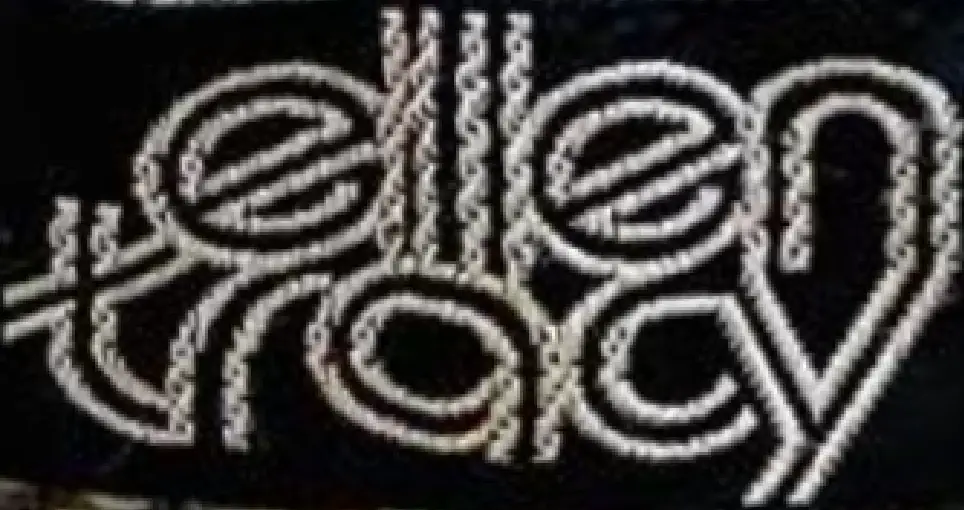
1960s to 1970s Ellen Tracy logo
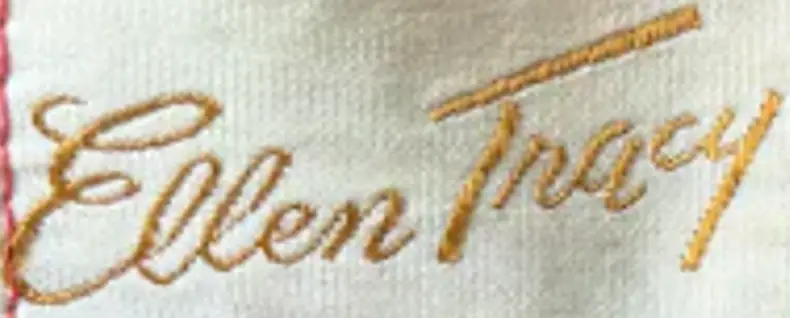
1960s to 1970s Ellen Tracy logo
1980s Ellen Tracy logo
- The 1980s logo shows a significant shift to a more modern aesthetic.
- The font is bold, uppercase, and sans-serif, reflecting the bold design trends of the 1980s.
- The emphasis on clean lines and straightforward typography signifies the brand’s move towards a more contemporary look.
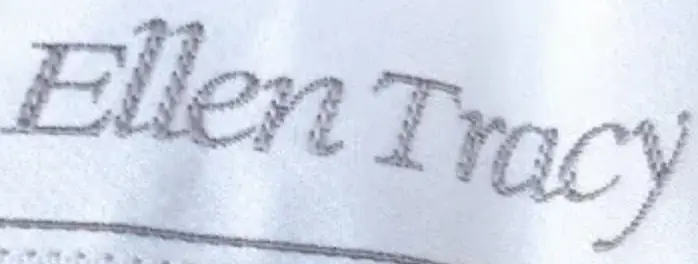
1980s Ellen Tracy logo
1990s to 2000s Ellen Tracy logo
- This era’s logo continues the trend towards simplicity but with a more refined touch.
- The font remains sans-serif but is less bold than the 1980s version, opting for a more elegant and professional appearance.
- The spacing between letters is slightly increased, adding to the modern, sophisticated look.
1990s to 2000s Ellen Tracy logo
1980s to now Ellen Tracy logo
- The latest logo iteration is the most minimalistic of all, featuring a thin, serif font.
- It emphasizes clarity and professionalism, indicative of the brand’s mature and established image.
- The use of all uppercase letters in a clean, serif typeface represents a blend of tradition and modernity.

1980s to now Ellent Tracy logo
How to tell if Ellen Tracy is vintage from the tags
The evolution of Ellen Tracy tags provides a fascinating insight into the brand’s history and the changing trends in fashion over the decades. Starting from its inception in the 1960s, Ellen Tracy has seen several changes in its logo, tag design, and materials, reflecting the brand’s growth and the broader fashion landscape. Understanding these changes can help you identify whether an Ellen Tracy piece is vintage and from which era it hails.
Can’t identify those vintage tags or labels? Upload a picture on our vintage tag identification page, and we’ll help you out!
1960s vintage Ellen Tracy tags
- Tags from this era often feature a more elaborate, cursive logo.
- Emphasis on a sophisticated, elegant font style that reflects the fashion sensibilities of the time.
- Tags are typically sewn onto more structured garments, indicating the brand’s focus on classic women’s fashion.

1960s Ellen Tracy tags
1970s vintage Ellen Tracy tags
- Tags continue to use a cursive font, but with a slightly more relaxed, flowing style.
- The logo is often embroidered on a fabric tag, which is sewn onto the garment.
- Colors of the tags range from soft pastels to more neutral tones, aligning with the era’s trends.
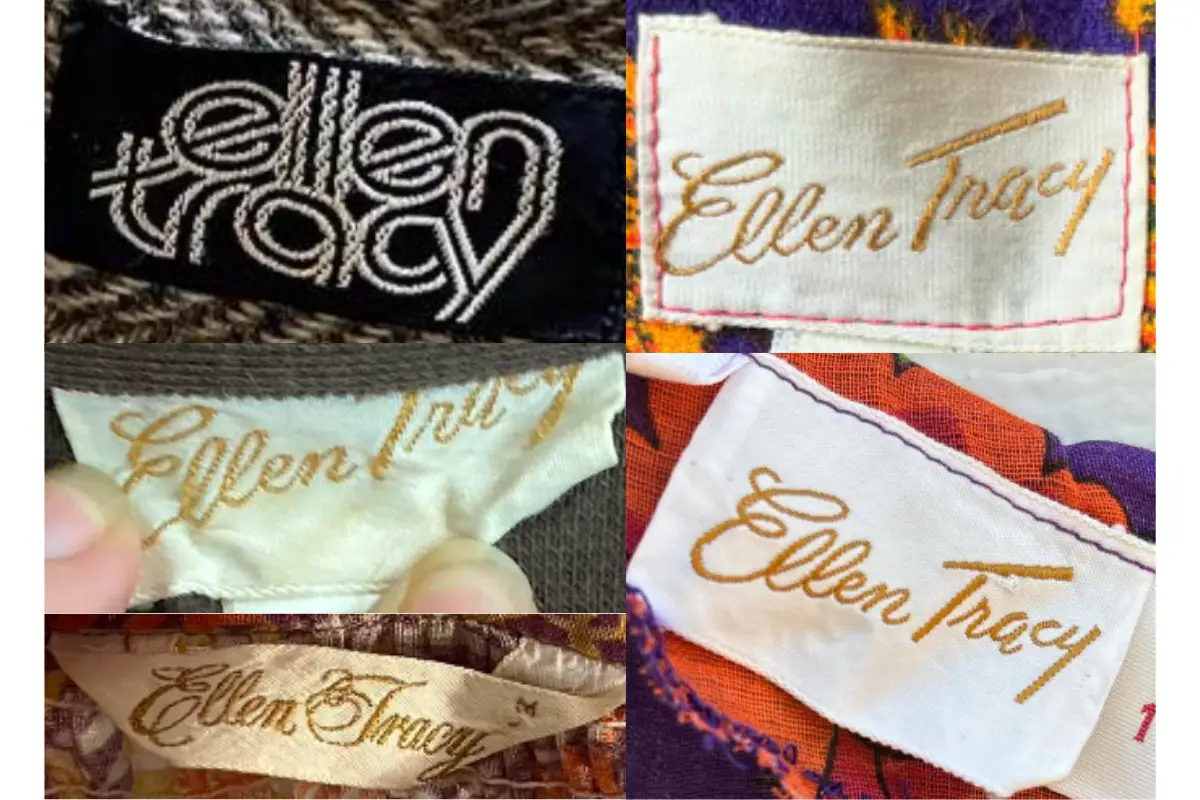
1970s Ellen Tracy tags
1980s vintage Ellen Tracy tags
- The 1980s saw the introduction of bolder, more structured font styles.
- Tags often feature a mix of serif fonts, sometimes with “Linda Allard for” included above the Ellen Tracy name.
- Tag colors during this period were generally neutral, with a preference for black, white, and beige backgrounds.
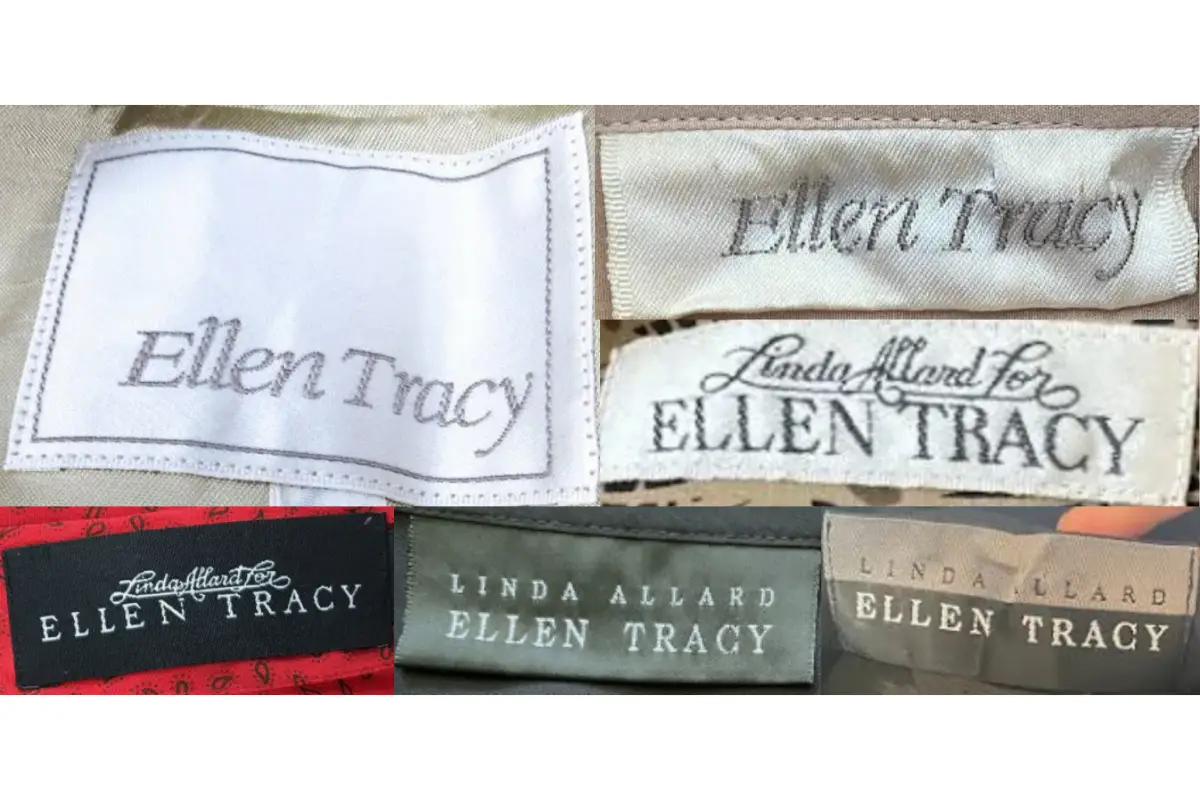
1980s Ellen Tracy tags
1990s vintage Ellen Tracy tags
- Tags from the 1990s often feature a simplified logo, with a strong emphasis on minimalism.
- Linda Allard’s name continues to appear on many tags, highlighting her influence during this period.
- The tag design became more streamlined, with cleaner lines and less ornate details.
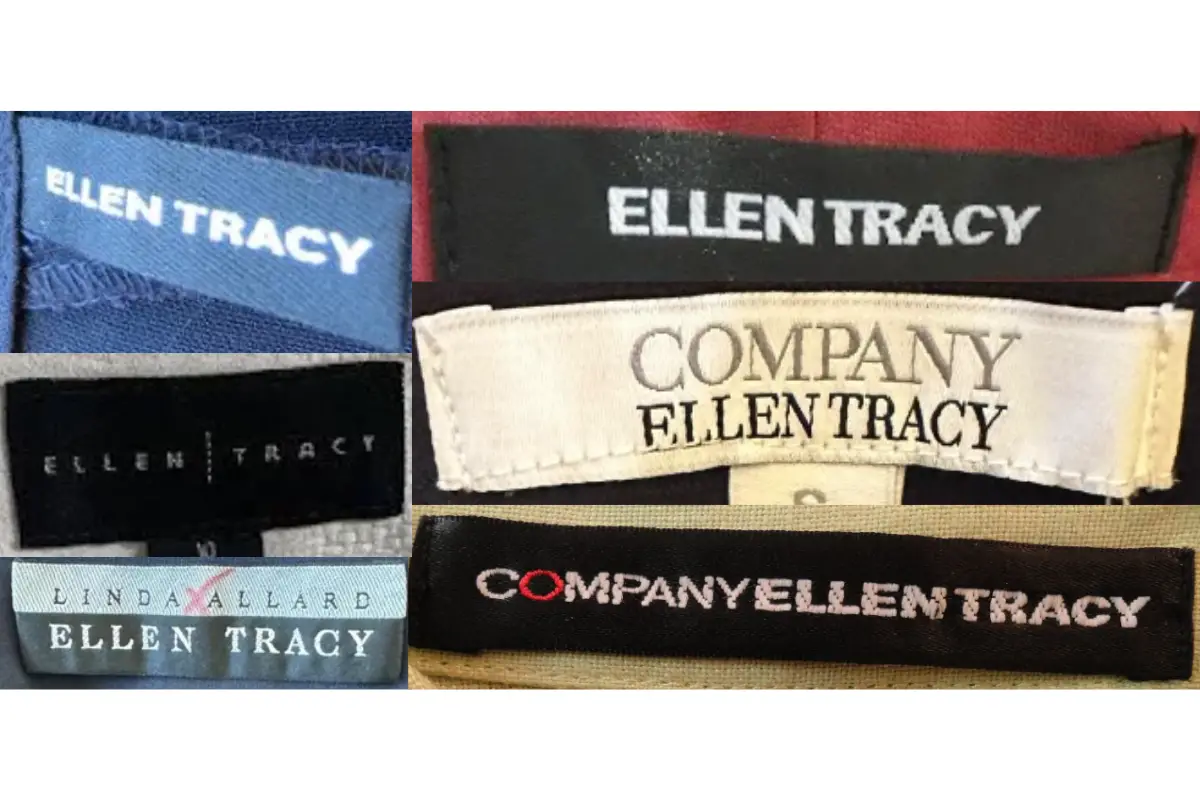
1990s Ellen Tracy tags
2000s vintage Ellen Tracy tags
- Tags in the 2000s reflect a more modern approach, with bold, sans-serif fonts becoming the norm.
- Some tags feature a combination of Ellen Tracy’s name with a company branding, such as “COMPANY ELLEN TRACY.”
- Colors are more varied, with both dark and light backgrounds used depending on the garment’s design.
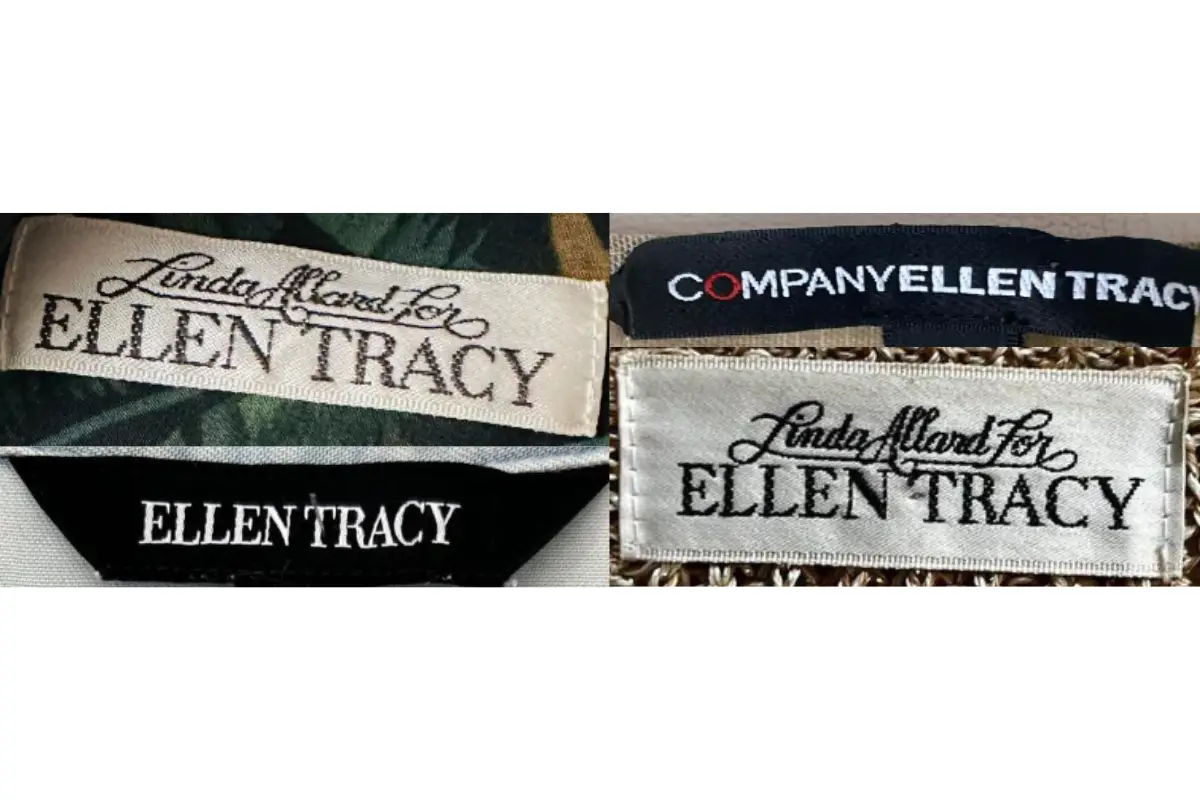
2000s Ellen Tracy tags
2010s vintage Ellen Tracy tags
- The 2010s saw further modernization, with a clean, straightforward logo design.
- Tags often feature a simple, monochromatic color scheme, with a focus on elegance and simplicity.
- Material quality of the tags also reflects the brand’s emphasis on luxury and contemporary fashion during this period.
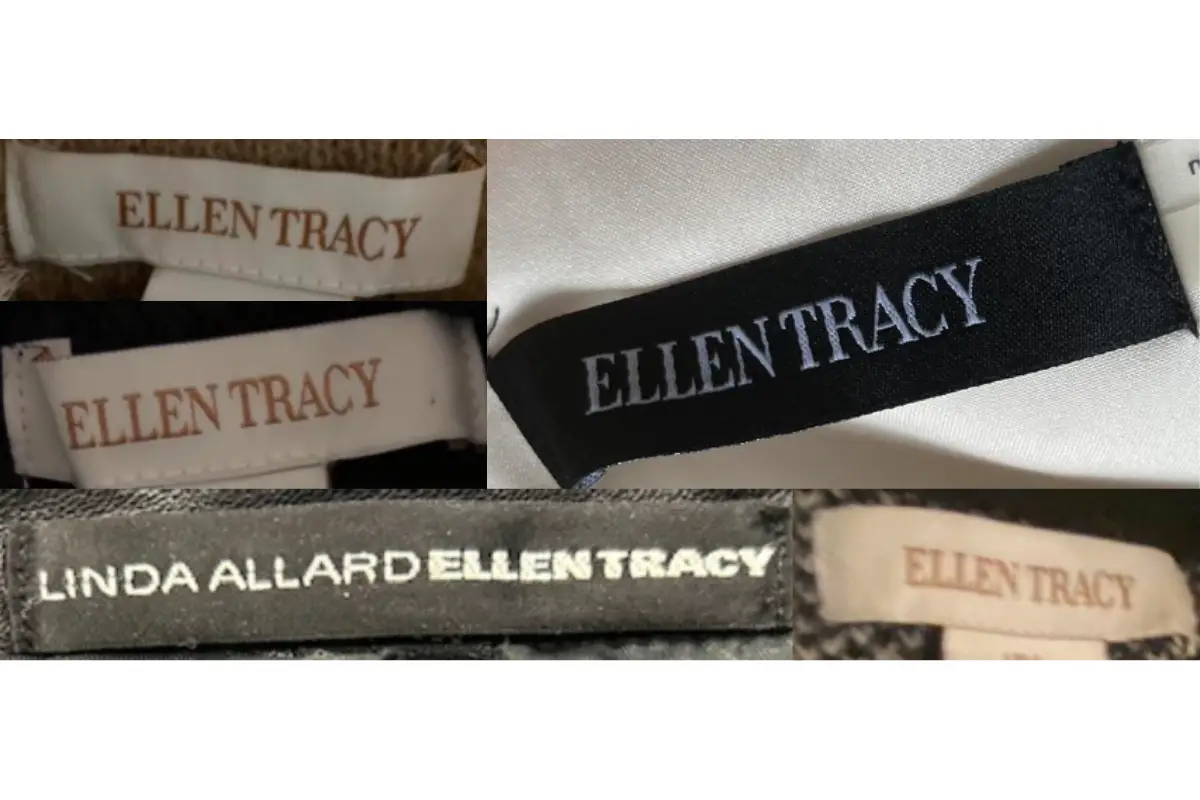
2010s Ellen Tracy tags




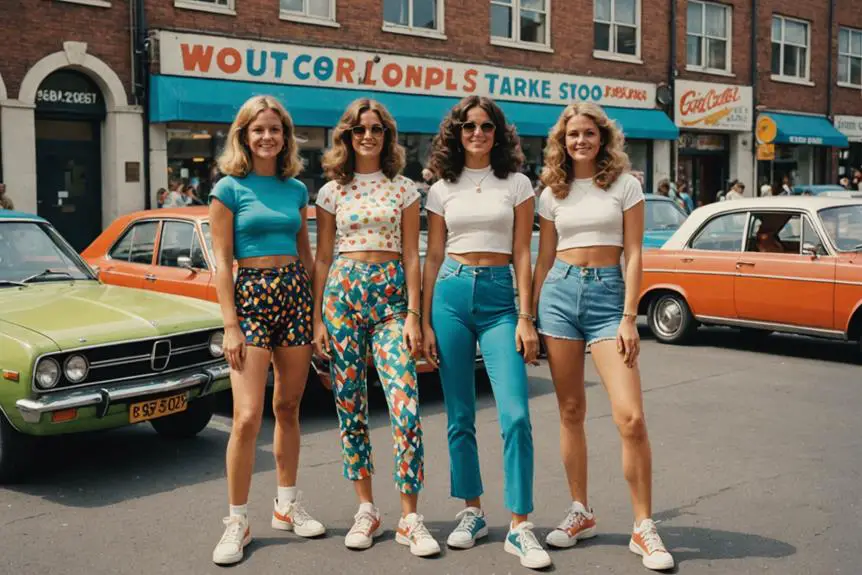
Your point of view caught my eye and was very interesting. Thanks. I have a question for you.